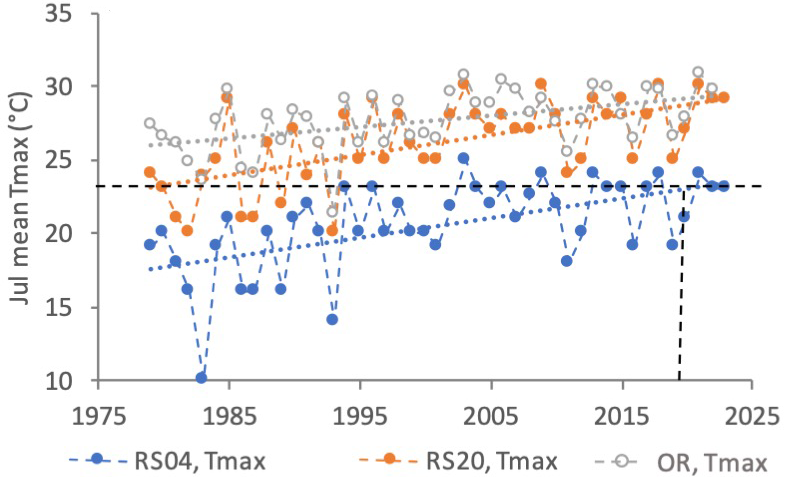Editors’ Highlights are summaries of recent papers by AGU’s journal editors.
Source: AGU Advances
The shading and evapotranspiration provided by forest vegetation buffers the understory climate, making it cooler than the surrounding non-forest. But does that buffering help prevent the forest from warming as much as its surroundings due to climate change?
Using a 45-year record in the H.J. Andrews Forest, Oregon, USA, Jones et al. [2025] compare changes in climate along a 1,000 meter elevation gradient with changes in nearby non-forested weather stations. The understory air temperature at every elevation within the forest increased at rates similar to, and in some cases greater than, those measured at meteorological stations throughout Oregon and Washington, indicating that the forest is not decoupled or protected from the effects of climate change.
Furthermore, the increase in summer maximum air temperature has been as large as 5 degrees Celsius throughout the forest. The temperature at the top elevation in July is now about the same as it was at the lowest elevation 45 years ago for some summer months. These findings are important because they indicate that, while forests confer cooler environments compared to non-forest, they are not protected from climate change.

Citation: Jones, J. A., Daly, C., Schulze, M., & Stlll, C. J. (2025). Microclimate refugia are transient in stable old forests, Pacific Northwest, USA. AGU Advances, 6, e2024AV001492. https://doi.org/10.1029/2024AV001492
—Eric Davidson, Editor, AGU Advances

